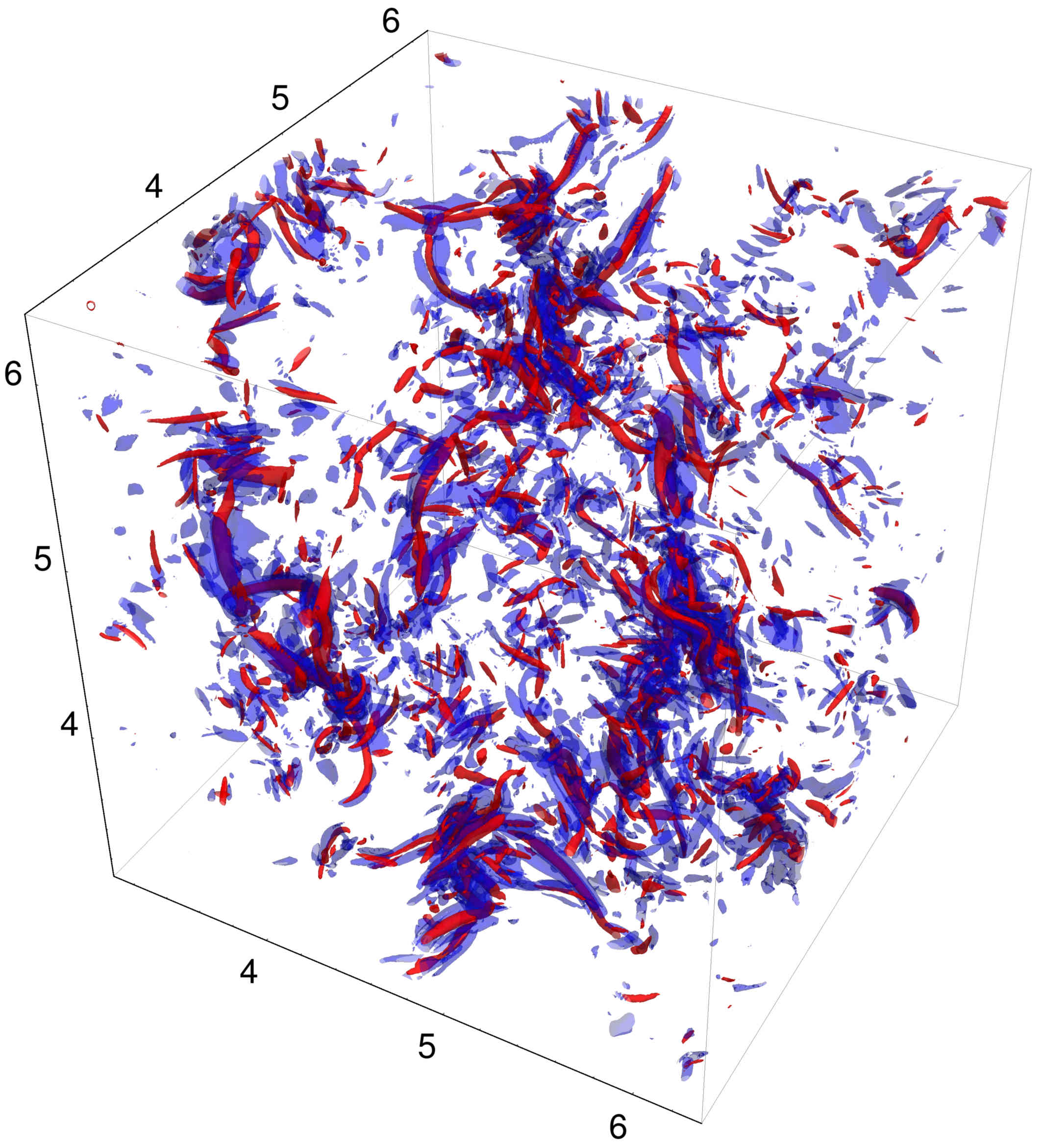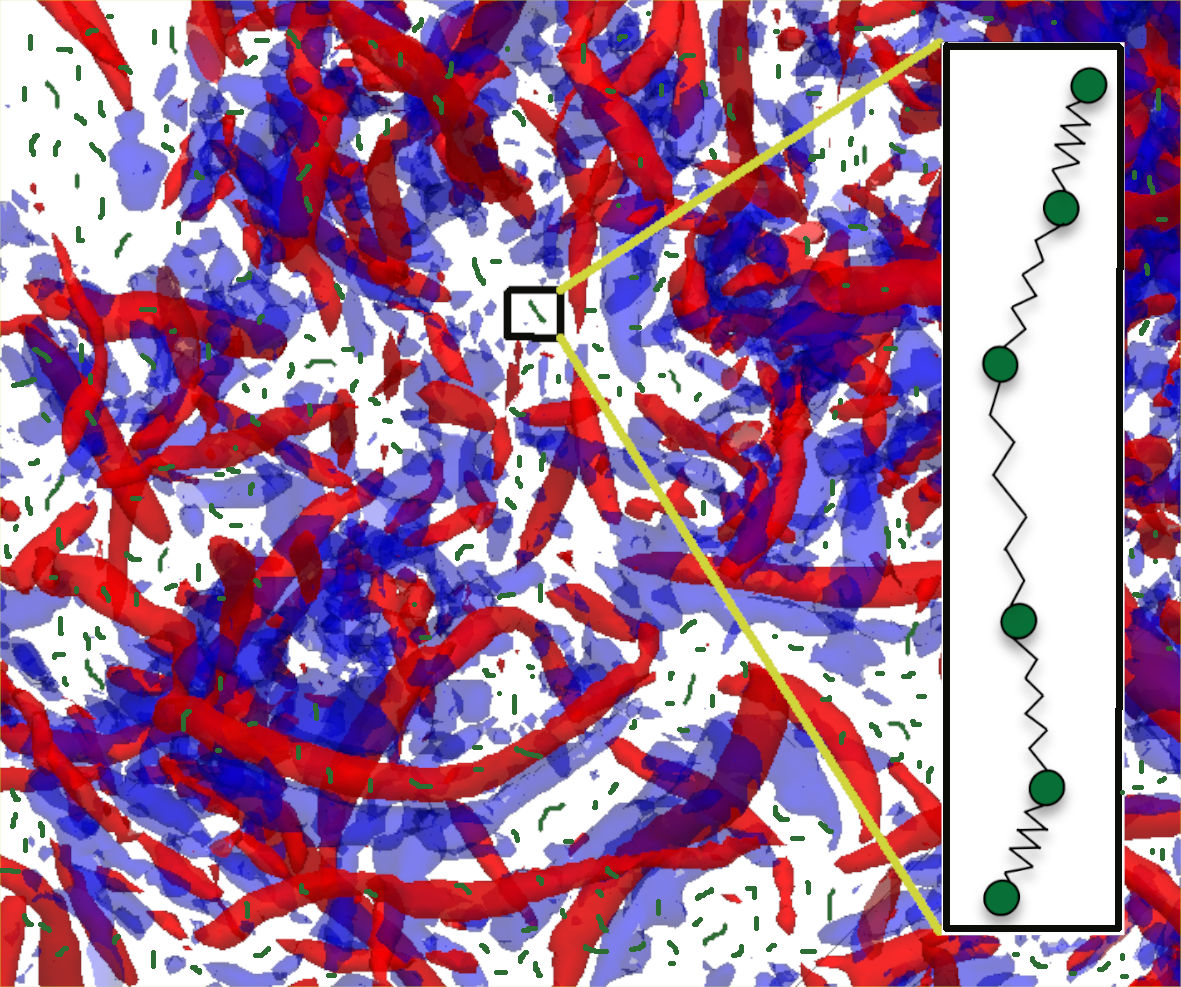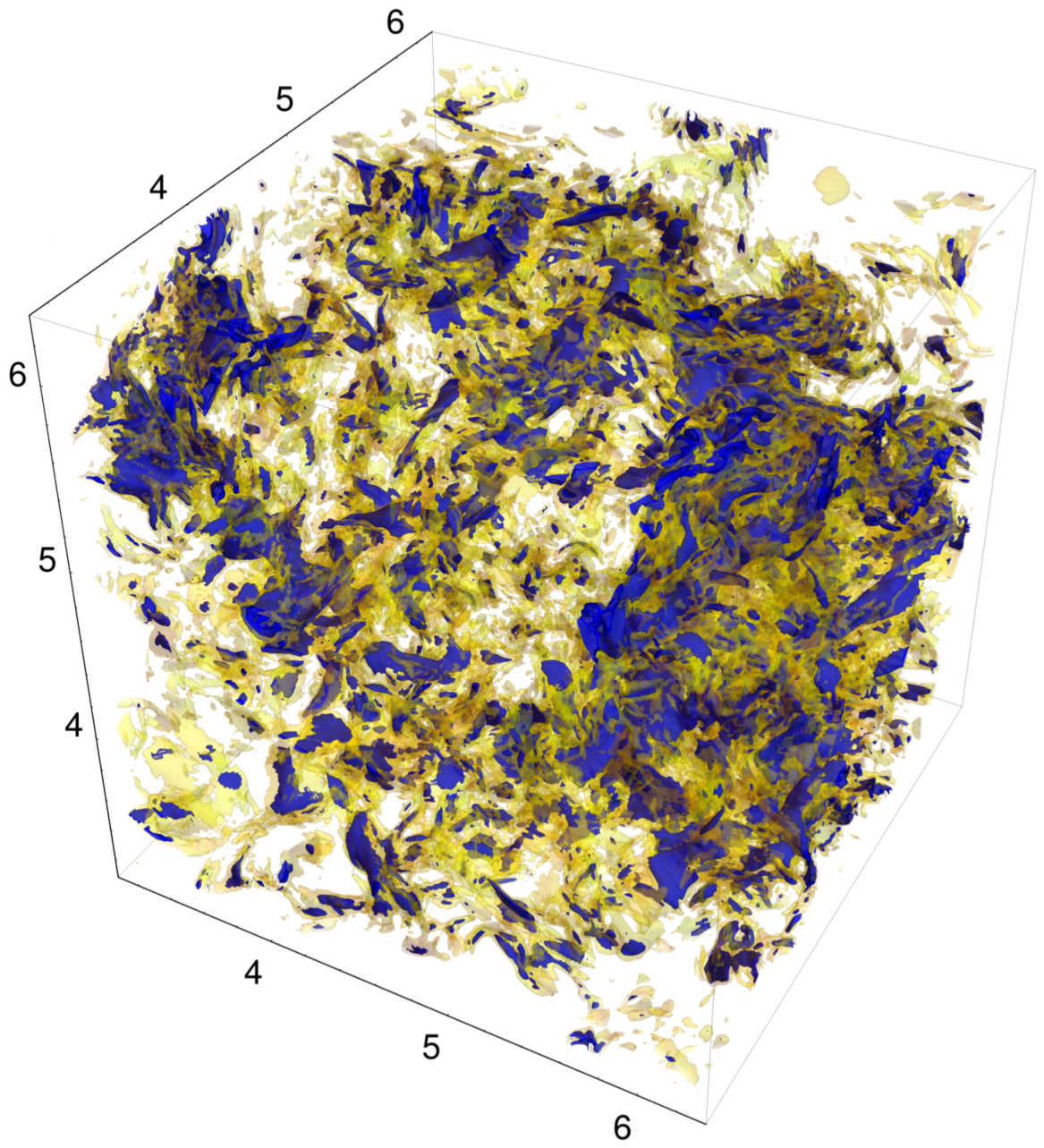Turbulent Transport
Turbulent flows are ubiquitous and play an essential role in a wide range of scientific problems: From the transport of oil in pipelines to the production of chemicals in stirred tank reactors; from the transport of plankton in the ocean to the formation of rain in clouds.

Despite appearing chaotic and random, turbulent flows have significant structure, albeit of a highly dynamic nature. Indeed, a characteristic feature of fully-developed turbulence is its small-scale intermittency (as seen in, e.g., statistics of the velocity gradient) which manifests in physical space as intense structures of vorticity and strain. In homogeneous and isotropic turbulence (away from the influence of walls), these flow structures typically take the form of worm-rolls, consisting of an intense tubular region of vorticity (a worm) enveloped by sheets of irrotational straining flow (figure on the left). One aspect of our work in this area is to understand how these self-organized flow structures impact the transport of suspended particles, filaments and polymers. For example, small heavy particles are centrifugally ejected out of vortices and end up clustering and colliding in straining regions (Picardo et al., Physical Review Fluids, 4, 032601(R), 2019). This phenomenon is relevant to the coalescence-driven growth of rain droplets in turbulent cumulus clouds. In contrast to dense particles, long flexible filaments are coiled up and trapped within vortices, in 2D turbulent flows (Picardo et al., Physical Review Letters, 121, 244501, 2018). The turbulent transport of filamentary objects is a key process in a variety of settings, from fibres in the paper industry to algae and micro-plastics in the ocean. Some of our recent/ongoing work in this broad area is outlined below.
Polymer scission in turbulent flows

The addition of even a small amount of polymer to a turbulent flow dramatically reduces the turbulent drag. Known as the Toms effect, this phenomena is exploited to reduce the pumping costs associated with transporting oil in pipelines. In homogeneous isotropic turbulence, away from the influence of walls, the same effect produces a decrease in the energy dissipation-rate. The source of this effect is the elastic feedback from polymers which are stretched-out by the flow. So it would seem that more stretchable polymers should produce a stronger effect, except for the fact that highly stretched polymers can undergo scission, breaking up into smaller and more rigid fragments. This scission process results in a gradual loss of dissipation-reduction, thereby limiting the applicability of this phenomena as well as complicating its experimental study. It is therefore important to understand how the scission process occurs, how its rate depends on turbulent flow properties and what its impact is on the flow itself. In recent work, we investigate these issues through a combination of stochastic simulations (where the flow is mimicked by white noise) and direct numerical simulations (with both one-way and two-way coupling to polymers). Along with detailed statistical information on scission events, we also find that the dissipation-reduction effect when integrated over time is maximised by an intermediate level of polymer stretchability, such that the polymers exert a moderate feedback force without breaking too quickly. Details are available in the preprint below.
Article: D. Vincenzi, T. Watanabe, S. S. Ray, Jason R. Picardo, Polymer scission in turbulent flows, Journal of Fluid Mechanics, 921, 2021, A18.
Collaborators: Dario Vincenzi (Univ. Cote D'Azur, Nice, France), Samriddhi Sankar Ray (ICTS, Bangalore) and Takeshi Watanabe (Nagoya Institute of Tech., Japan).
Lagrangian irreversibility and Eulerian dissipation in turbulence

Irreversibility is fundamental to most physical systems. This is especially true of turbulent flows— the archetype of non-equilibrium systems — which dissipate energy in a highly non-uniform and intermittent manner, with sheet-like zones of intense (Eulerian) dissipation embedded in a relatively calm background. Fluid particles in such a flow are known to experience sudden and rapid energy loses followed by gradual energy gains, a temporal asymmetry which serves as a Lagrangian measure of the carrier flow's irreversibility. In this work, we uncover an exquisite interplay between irreversibility and intermittency—another characteristic property of turbulence — by using simulations to examine the connection between energy fluctuations of particles and their passage through zones of intense dissipation. Surprisingly, we find that rather than losing energy, particles in intense zones actually gain energy rapidly due to a pressure-gradient driven take-off mechanism. Indeed, the rapid energy loses that signify Lagrangian irreversibility occur not in intense zones but in the expansive mild regions of the flow. This result is reinforced by simulations of a "Fourier-decimated" non-intermittent turbulent flow (devoid of intense zones), wherein Lagrangian irreversibility is found to persist. Thus, the Lagrangian manifestation of irreversibility is insensitive to intermittency.
Article: JR Picardo, A Bhatnagar, SS Ray, Phys. Rev. Fluids 5, 042601(R) 2020.
Collaborators: Akshay Bhatnagar (NORDITA, Sweden), Samriddhi Sankar Ray (ICTS, Bangalore).